We kindly inform you that, as long as the subject affiliation of our 300.000+ articles is in progress, you might get unsufficient or no results on your third level or second level search. In this case, please broaden your search criteria.
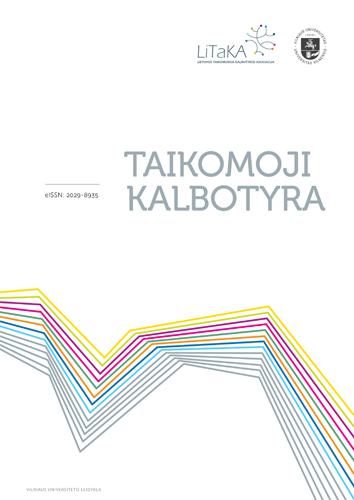
The paper investigates a twofold attitude towards linguistic diversity in the Lithuanian-speaking community, where, on the one hand, the dialects are valorised as a national and ethnographic asset and, on the other hand, as imposing certain restrictions on their use because of their association with a lower social value and negative stereotypes. Three direct attitudinal studies serve as an empirical basis for the research: a quantitative survey, qualitative interviews and an experiment with high-school students on stereotypical traits of the dialect speaker. When discussing future prospects of dialect change, the overt values of the speakers are compared with the findings of the speaker evaluation experiment that have revealed subconscious values of dialectal speech. The research has shown that compared to the Soviet times, the ideological climate regarding dialects has become more politically correct. Positive attitudes are most prominent at a declarative level and when regional identity and the speaker’s affiliation with a particular community have to be emphasised. Daily personal experiences, however, with the functionality of a dialect and evaluations of social and geographic mobility of dialect speakers, show a less favourable assessment of dialectal speech in comparison to the standard (non-dialectal) varieties. It is very much due to a frequent negative stereotyping of dialect speakers. The subconscious attitudes also reveal that the dialectal variability of speech has an arguably lower social meaning compared to the non-dialectal variability. The attitudes and practices of non-professional (lay) people may be claimed to reflect a double-faced standardization ideology of the Lithuanian language, which valorises dialects as an ecologic asset and at the same time limits their functioning by putting them in the reserve of “immobile” speakers.
More...
The paper focuses on vowel lengthening in Vilnius speech. This feature has been stigmatised by Lithuanian language planners as a feature of Slavic origin, which has influenced Vilnius speech and therefore has to be avoided as non-standard and incorrect. The aim of the study was to find out how frequent the lengthening of short vowels is in the speech of Vilnius and how it depends on linguistic and social factors and self-monitoring of speech. The research is based on the classical Labovian interview with seventeen second and third generation residents of Vilnius (aged 18–40), 4.5 hours of speech in total.The research has shown that vowel lengthening is far from common in Vilnius speech. It depends largely on the type of syllable and the place of stress; the lengthening mostly affects just stressed syllables and usually in word stem. The lengthening of short inflectional endings, which is highly associated with Russian or Polish accent and regarded as the worst feature of urban speech, seems to be extremely rare. It has also been shown that the tendency to lengthen manifests itself quite consistently; informants who lengthen stressed vowels in the stem of the word more often than others tend to lengthen syllables at the end of the word. This applies to all contextual styles.In spite of relatively big individual difference in speech of informants, the research revealed that vowel lengthening in Vilnius speech is mostly used by the oldest of our informants and by men more than women. The dependence of vowel lengthening on contextual style turned out to be quite controversial and may point to the development of different speech norms in Vilnius.
More...
In the world which globalizes and levels out the differences of language dialects, their usage becomes an expression of a natural ethnic identity. The studies of their actual changes can reveal the ongoing processes in society. Unfortunately, studies of this kind are very few. To the authors’ knowledge, there has been no research focusing on regional patterns of dialect usage. Based on the data provided by the research project Sociolinguistic Map of Lithuania: Towns and Villages, the authors analyse the use of dialects in 67 towns of Lithuania with the population exceeding 3,000 people. The aim of the article is to determine regional peculiarities of sociolinguistic use and attitudes towards dialects, i.e. the distribution patterns of regional identity. The first section of the article is devoted to the opinions about the links of the distribution of the most beautiful, most common, most prestigious and hardly understandable dialects to the ethnographic regional structure of Lithuania. It has been determined that in smaller Lithuanian towns, especially the ones situated in the regional kernels, the usage of the dialects is still vital and regional identity is still very strong, whereas the residents of big towns, except Klaipėda, value the dialect of the region of their origin more than the dialect of their current region. The Žemaitija and Aukštaitija regions are dialectically strongest in Lithuania. Their dialects tend to spread. Meanwhile, the positions of the dialect in the small region of Dzūkija and regional identity of its population are weaker. The second section analyses opinions about the value of dialects and the necessity to preserve them. The residents of regions and towns with homogeneous ethnic structure are more determined to encourage the younger generation to use their native dialect. The same attitude is also characteristic of the population residing in kernels of regions.
More...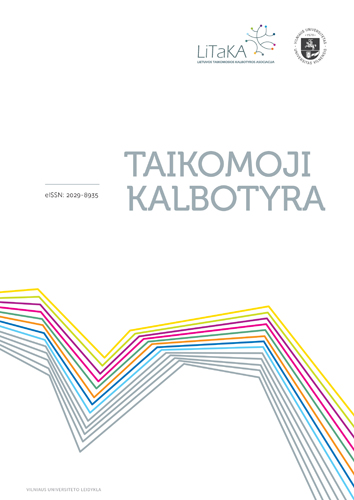
Language standardization ideology prevailing in most European countries sustains a lower social value of dialects in comparison to the standard language. The linguistic variety of social elite, media, public administration, and public use – the standard language – is often rated as ideal or at least more adequate for most domains of language use than local dialects. This paper investigates the situation in Lithuania, analyzes linguistic attitudes towards dialects of upper-secondary school students in Lithuanian cities. The data gathered in the context of the project “Lithuanian language: ideals, ideologies and identity shifts, 2010-2013” group discussions organized in schools of nine Lithuanian cities (Alytus, Kaunas, Klaipėda, Marijampolė, Panevėžys, Šiauliai, Telšiai, Utena and Vilnius) as well as the experimental data, is analyzed for the social value of Lithuanian dialects. The research revealed both overt and covert prestige of dialects. The overtly declared prestige of a dialect is weak and the social value is lower when comparing to the standard language. Moreover, the usage of a dialect is fairly strictly limited and involving only a private sphere, non-official communication. On the other hand, an indirect evaluation when describing stereotypical characteristics of a dialect speaker has shown a rather positive covert prestige of the dialects. Even though dialect speakers are not distinguished by a superior status or social power and are most often seen as coming from a rural environment, which is not modern and associated with old traditions, social attractiveness of a dialect speaker is specifically emphasised, also the dimension of social solidarity and resistance to standardization associated with a dialect is highlighted. The results of the research point out some tendencies of the (not yet extinguished) vitality of dialects.
More...
The paper deals with the representative systems of the Lithuanian language from the perspective of ordinary members of language community. The empirical data includes the names and nominations of the language variants given by ordinary members of language community. The data for the research was collected during the preliminary stage of the implementation of the research project Lithuanian Language: ideals, ideologies and identity shifts focusing on the analysis of prestigious aspects of the varieties of the Lithuanian language, language ideals, language ideologies, etc.The paper is an attempt at the typologization of discourse variants identified by ordinary members of language community by estimating the (lack of) correspondence of the variants with geolinguistic and sociolinguistic language variants offered by scholars within certain scientific paradigms. Geolinguistic and sociolinguistic perspectives identify discursive variants according to objective differences and degree of their distinction. The investigation has manifested that the taxonomy of discursive variants suggested by ordinary members of language community helps locate oneself in the holistic space of the national language. The arguments raised in support of the above taxonomy include language facts as well as intuition, or the claim of I think that this is so type. Thus the isoglosses of perception of ordinary members of language community divide the national language continuum into a large number of segments.The respondents tend to give the status of 'variety' to the large, objectively independent representational systems, cf., Highland dialect, Lowland dialect, etc.; and to the representational systems that do not have the value of 'variety' from the perspective of a researcher, cf., regular vs irregular speech, sophisticated speech, etc.When speaking about the horizontal divisibility of language continuum offered by the ordinary members of language community and researchers, the most outstanding difference was that the ordinary members of language community had supplemented the binary dialect classification by two members. The taxonomy of the ordinary members of language community includes the Dzūkai and the Suvalkiečiai dialects alongside with the Highland and the Lowland dialects.When speaking about the vertical divisibility of language, it should be noted that no more such differences between the perspectives of the ordinary members of language community and sociolinguists have been observed; only the isoglosses of perception are much thicker.It should be noted that although the sample of the research is not large, the participation of the ordinary members of language community in the discussion has been definitely beneficial as it brought in the data contributing to the increasing awareness of the boundary problem both in geolinguistics and sociolinguistics.
More...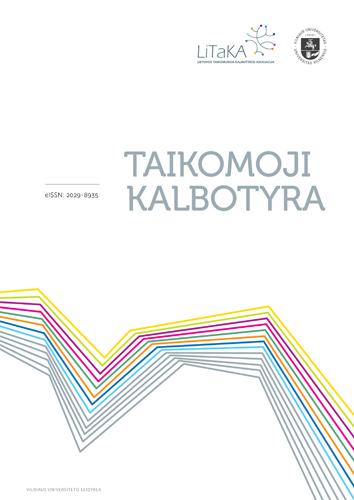
Currently more and more research is devoted to the analysis of the linguistic situation of Lithuanian towns and villages (cf. Ramonienė et al. 2010). The issues of the choice of linguistic varieties and analysis of the trends of using dialects in private and public life as well as relationship between dialectal speech and standard language deserve special attention (Ramonienė et al. 2010; Ramonienė 2006; Aliūkaitė 2007; 2011; Kalėdienė 2009). This paper makes use of the material and the quantitative data from the project The sociolinguistic map of Lithuania: towns and villages implemented by Vilnius University, the Lithuanian Language Institute and Vytautas Magnus University in 2010-2012 as well as of the maps drawn by Viktorija Baranauskienė on the basis of the same data (2013). A more detailed analysis of dialects used by children in communication with their parents in the towns of Žemaitija region (cf. the map The use of dialects in communication with parents among the respondents and regional distribution of dialects) is given and the features of a dialect used in Klaipėda, the largest town of Žemaitija, and smaller towns as well as the opinions of the residents of Žemaitija about the most usual, most valuable and most intelligible dialect and promotion of the use of dialects among young people are discussed separately. The quantitative data is presented in graphs and maps. According to the quantitative data, the use of heterogeneous, or ‘mixed’, and homogenous, or ‘pure’, dialects of the towns of Žemaitija region in communication with parents is as follows: the Žemaitian dialect prevails in many ‘pure’ towns of Žemaitija such as Plungė, Rietavas, Telšiai, Gargždai, Šilalė, Skuodas. The residents of these towns are also more favourably disposed towards the Žemaitian dialect—the majority would encourage young people to learn and speak the dialect; however, a smaller percentage think that the Žemaitian dialect is the most beautiful. In the ‘mixed’ towns of Žemaitija region (where both the Aukštaitian dialect and the Žemaitian dialect are used) Šiauliai, Kuršėnai and Šilutė only 1–5 per cent use the Žemaitian dialect in communication with parents, but there the Žemaitian dialect is considered the most usual and the most beautiful.
More...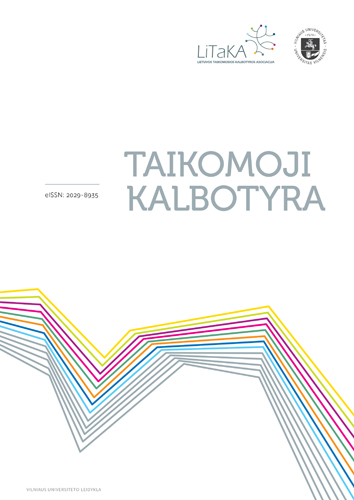
The aim of this article is to analyse swearing practices of Vilnius adolescents and the identities, associated with those practices from the attitudinal and interactional perspectives. The data, which the analysis is based on, consist of the questionnaire survey, completed by 79 adolescents, and two extracts of adolescents’ spontaneous conversations. In the questionnaire, adolescents were asked to evaluate their peer who uses a huge amount of Russian swearwords blet and nachui and their peer who uses the English swearword fuck, i.e. to examine if there are differences in attitudes towards the well-established and generally regarded as very obscene Russian swearwords and the recently appeared English swearwords. Swearing in Russian in the attitudinal questionnaire study was associated with the construction of the masculine streetwise identity. However, the interactional analysis of swearing in Russian shows that Russian swearwords can be employed in the construction of a female streetwise and a masculine non-streetwise identity. The English fuck, which was considered the mild swearing among Vilnius adolescents in the questionnaire study, does not invoke any specific youth social category.
More...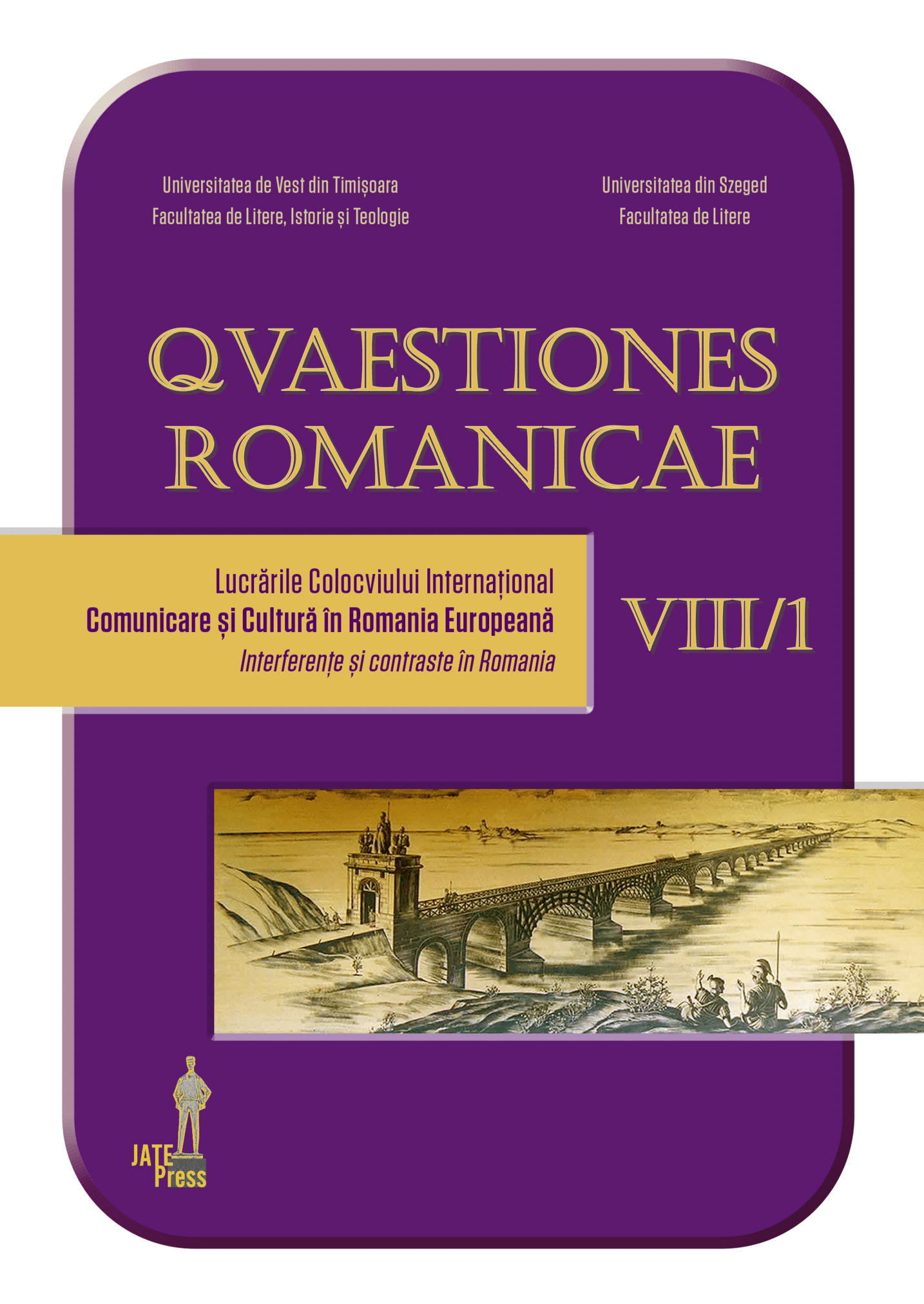
The current paper is based on a general theoretical framework based on the works of Gottlieb (2004), Díaz Cintas (2005), Bartoll Teixidor (2012), and Varga (2014, 2016, 2017) in the field of audiovisual translation and subtitling. It aims to carry out a contrastive analysis of the subtitling practices and typology in Spain and Romania, in order to find out comprehensive data about the phenomenon of subtitling in our country. Our initial hypothesis is that both countries have different perspectives on the subject of subtitling and this phenomenon is understand and used differently within Spain and Romania. To begin with, we want to discuss the legal norms that configure the use of the subtitling as audiovisual translation in both countries. Based on this legal framework, we also analyse the purpose of the subtitles, their typology and the audiences they are trying to reach. Based on the diversified typology of subtitling, our research aims to find out the new trends of subtitling progress in Romania and to distinguish the most representative types of subtitling used in our country. We consider that our study will provide extended and comprehensive information about the context of use, about the audiences, and about the evolution of subtitling in Romania.
More...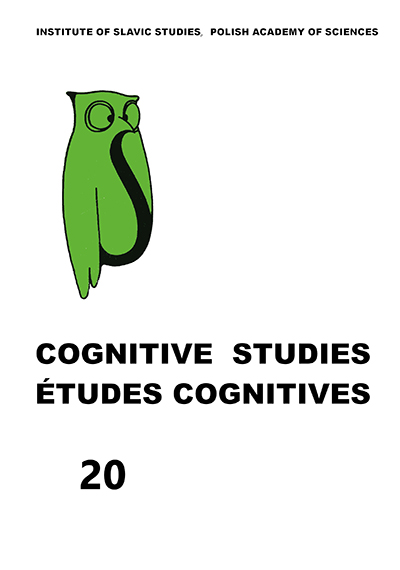
The article highlights the peculiarities of political internet memes as information units that shape public opinion. The article also examines the role of memes in society. The research material includes creolized memes (including both verbal and visual elements) about the Ukrainian politicians Petro Poroshenko and Volodymyr Zelenskyi. These memes were created in 2019 during the Ukrainian presidential election. The article firstly focuses on the verbal aspects of the memes and their semantic and functional features. In addition, the peculiarities of opponent image construction are analysed. The article then examines the influence of Ukrainian politicians on the conduct of the “meme war”. The article also sheds light on the role which memes play in the polarization of society.
More...
This paper analyses the present status of the Polish language in the Ukrainian city of Ivano-Frankivsk (formerly Stanislaviv) and the challenges which it faces. The Polish language is a minority language in the city. National identity statistics from the censuses of 1931 and 2001 are analysed. The paper examines the following institutions and areas of Polish language usage and vitality: the activities of the Centre for Polish Culture and European Dialogue in Ivano-Frankivsk, Polish societies, religion, family and education.
More...
This article focuses on multilingual female speakers born in Bukovina in the 1920s using the language biography method. Analysing selected language biographies of Poles living in southern and northern Bukovina entails focusing on a heritage language. The language biography method shows the development process of individual language awareness. The cases analysed in the study indicate that it is difficult to preserve the linguistic and cultural identity of an individual in mixed-language marriages. For Bukovinian Poles, the Polish language and the Roman Catholic religion are factors of identification and indigenous values symbolizing their belonging to the culture of their ancestors. These two elements are at the core of their identity and are fundamental cultural values which are passed on to children. All the language biographies presented in the article show the speakers’ multilingualism and the way and time in which they learned subsequent languages. Their acquisition was voluntary on the one hand, but imposed on the other.
More...
This article concerns the changing situation regarding toponyms in Ukraine, from the country’s regaining of independence to the present day. The article identifies two waves of decommunization. The first occured between the regaining independence in 1991 and 1995. The second wave began with the Revolution of Dignity in 2013–2014 and continues to this day. In the second part of the article, toponyms connected with Poland are presented and the reasons behind their creation are explained.
More...
This article concerns the study of the non-verbal means of communication designating the emotional state of joy which are present in fictional discourse. The functional peculiarities of non-verbal means designating the emotional state of joy are specified. It is proved that the register of non-verbal components indicating joy includes facial expressions, gestures, phonation, and the like. The subsystems of kinesic and phonatory non-verbal components are the dominant ones. Fictional discourse including representations of joy contains both verbal and non-verbal means of designating the emotional state, functioning either separately or in interaction. This interaction is based on the concept of emotional valence and is represented in repetition, contradiction, substitution, complementation, emphasis and regulation. In an utterance, non-verbal means can occur in the initial, medial, and final positions. The most common models of the occurrence of non-verbal components denoting joy in utterances are revealed.
More...
The article explores the linguistic situation in Ukraine, where a key sociolinguistic peculiarity is the large-scale spread of various types of Ukrainian–Russian bilingualism. A special focus is put on bilingualism among children speaking two closely related languages, which represents a current language situation beyond any historical or political context. The article describes the peculiarities of the formation of child bilingualism, which are a result of the changing priorities of the primary and secondary tools of communication. The article presents the findings of a survey covering the family environment, undertaken in order to identify key trends in children's speech in Ukraine. This knowledge subsequently allows for the tracing of the correlation between a mother tongue / parents' second language, the language of family communication, and the national language in Ukraine. Moreover, it helps when it comes to the decision of whether or not to introduce bilingual practices in the early stages of the linguistic personality formation of a child. The concept of a ‘bilingual linguistic personality' is covered, and certain aspects pertaining to how bilingual children perceive the world are listed. The article takes into consideration the issues and criteria of the ‘mother tongue' concept in bilingual settings. The notion of ‘linguistic code switching' is characterized, as well as its impact on the formation of bilingual communicative competence in children. A focus is laid on the use of mixed forms of Ukrainian–Russian bilingualism in the context of the communicative practices of bilingual children. The article also examines a peculiar type of bilingualism, typical of a certain category of bilingual pre-schoolers and primary school children, in which each party of a communicative act tends to preserve their dominant language in an informal setting.
More...
The main aim of this article is to examine the extent to which international learners of the Polish language are able to understand audio-visual advertisements based on idiomatic phrases. To answer this question, research was conducted amongst students of B2 level or higher, according to the Common European Framework of References for Languages (Council of Europe, 2002). This paper joins two distinct but inseparable disciplines in this field of study – namely marketing and language – in order to demonstrate audio-visual commercial advertising as a language discourse.
More...
The article offers an analysis of the actualisation of Ukrainian vocabulary, primarily in the Galician dialect. Yurii Vynnychuk's novels Tsenzor sniv (Eng. Dream Censor) and Tango smerti (Eng. The Tango of Death) have been chosen as sources for this research. Particular attention is paid to vocabulary for naming abstract notions, some polite words, and vocabulary relating to L'viv domestic life. Furthermore, the semantic structure and stylistic features of the actualised L'viv dialect are identified. The results indicate that the vocabulary in Yurii Vynnychuk's novels was used to describe life in L'viv during the interwar period. In addition, an analysis of modern dictionaries demonstrates that Galician vocabulary, and the L'viv dialect in particular, are returning to the core of the lexical system.
More...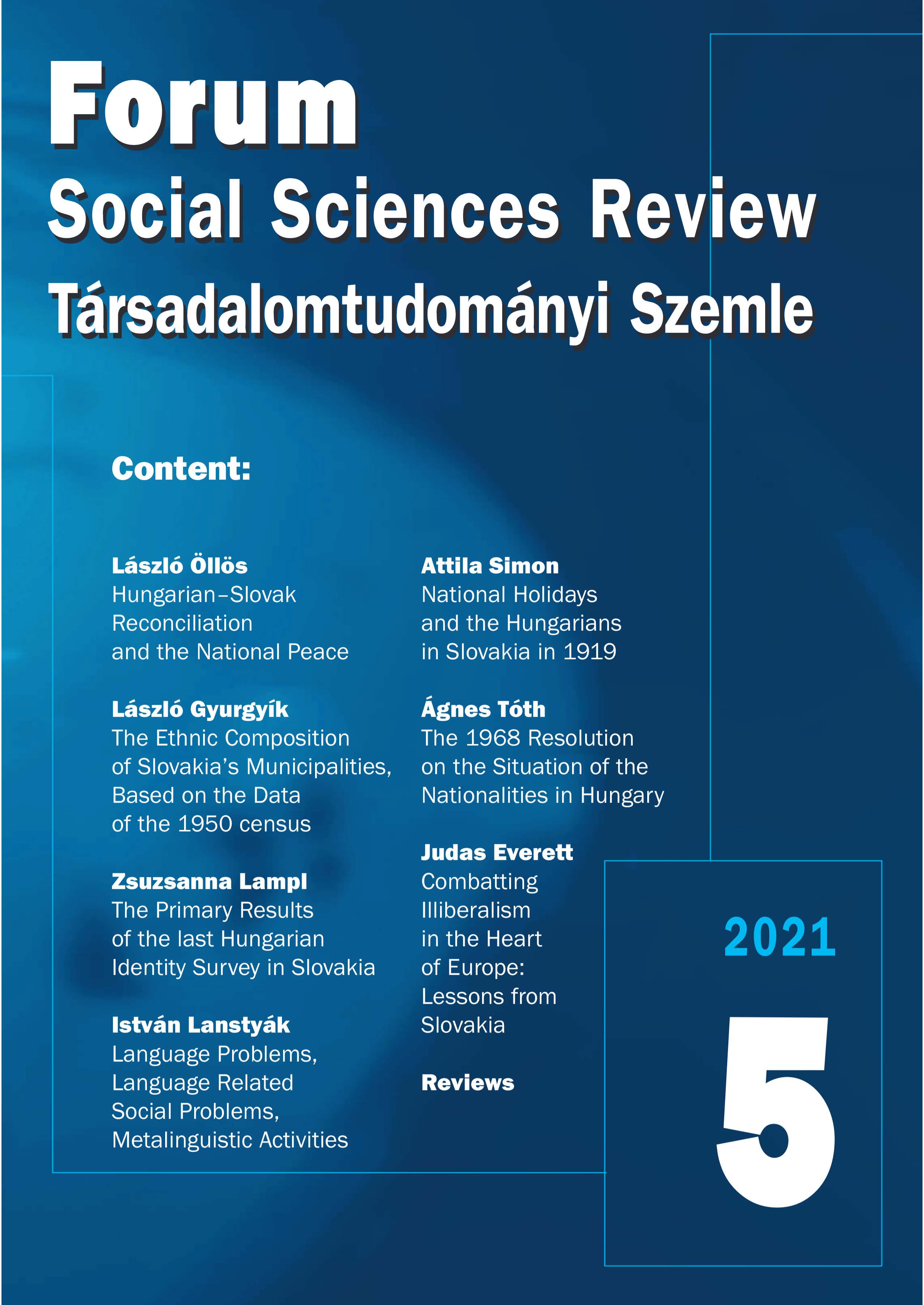
The paper is concerned with various kinds of language problems. The main question it poses is what kinds of problems a theory of language (problem) management should deal with. Applied linguistics is engaged with three areas of problems: 1. language problems in the narrow sense of the word; 2. social problems related to language (verbal communication), which require to implement changes in discourses or in the so-called language system; 3. social problems related to language (verbal communication), which do not necessitate implementation of changes in discourses or in the so-called language system. The author’s conclusion is that any theory of language problem management should address only the first and the second of the afore-mentioned problem areas.
More...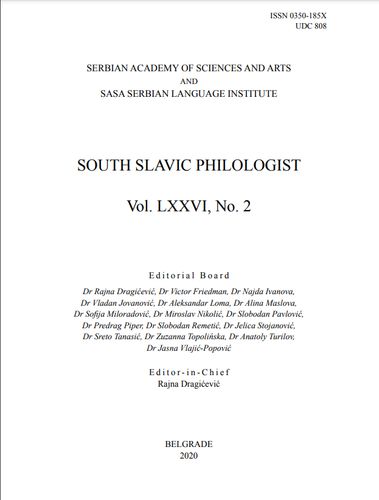
The paper’s author examines to what extent ethnolingustics meets the paradigmatic criteria according to Thomas Kuhn (“A paradigm is the thing that divides the members of the scientific community and vice versa; the scientific community connects people sharing a certain paradigm”) and compares the key terms which constitute this discipline’s instrumentarium. The author focuses on the researchers gathered around the international annual titled Etnolingwistyka; the representatives of the approach known as the Lublin School of Cognitive Ethnolinguistics. Two dictionaries are representative of the School: Słownik stereotypów i symboli ludowych (Vol. 1–2; 1996–2020) and the five-volume lexicon titled Leksykon aksjologiczny Słowiani ich sąsiadów (2015–2019). According to the author; based on these two dictionaries and the accompanying publications; it is already possible to compile a glossary of key terms of ethnolinguistics. Such glossary would consist of several key concepts: the linguistic worldview; concept (synonymous with “stereotype”); viewpoint and perspective; cognitive definition; profiling and profile; subject; values; etc. This terminological apparatus was particularly used in the creation of the said axiological lexicon and has now become the common good of the whole team of authors. This corresponds to Kuhn’s second postulate.
More...